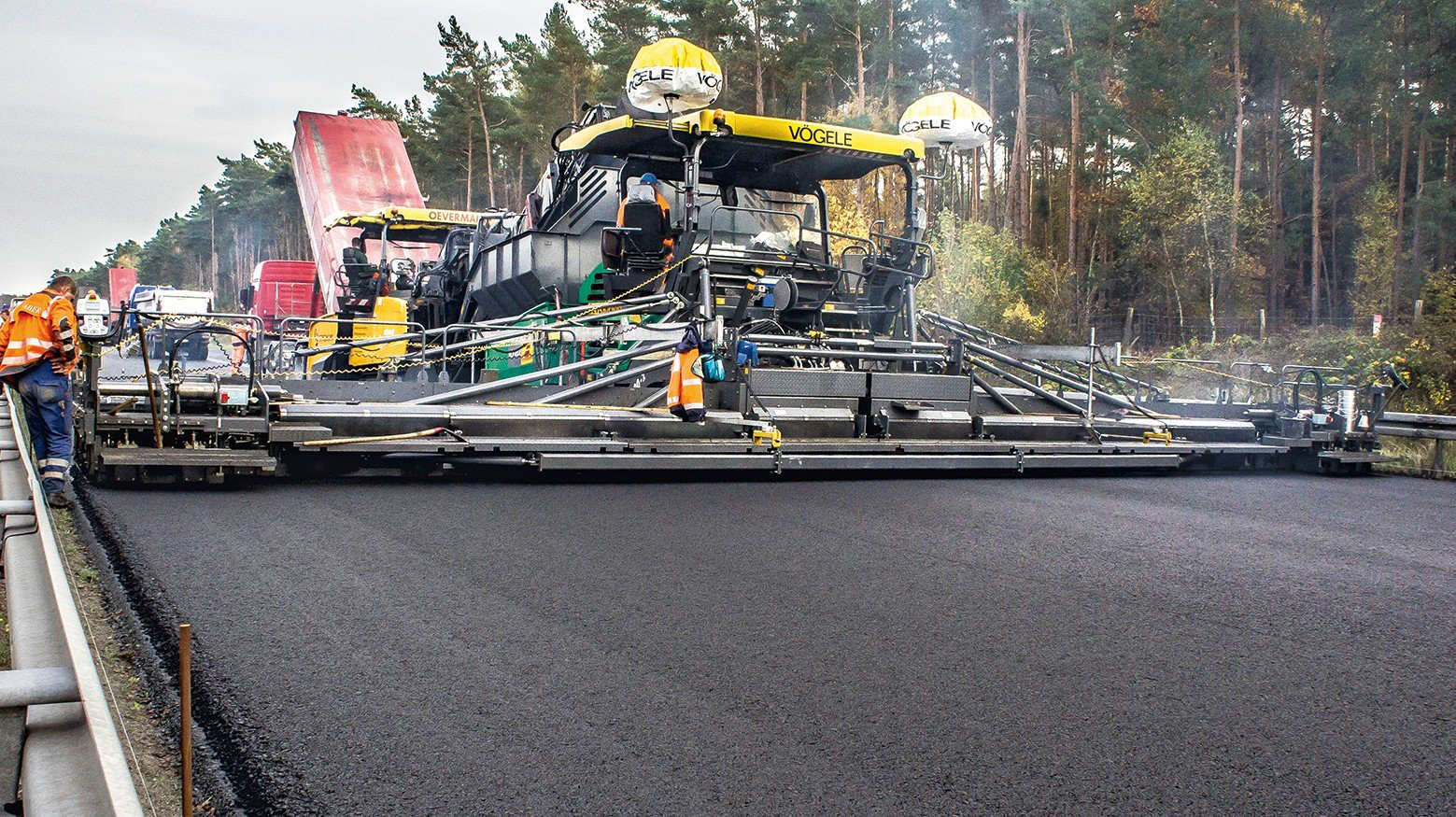
Pavers, also known as road paver finishers, asphalt finishers or road paving machines, are used to lay asphalt on roads, bridges, car parks and other such places. The machine is used to lay the asphalt flat on the ground and provides minor compaction before it is compacted with a roller. Self-propelled pavers consist of two basic units which is the tractor and the screed unit. The tractor provides the forward motion and distributes the asphalt. The screed is the most important component as it levels and shapes the layer of asphalt.
History
Asphalt as a paving material dates back to 1815 when Scottish John McAdam developed a road surface involving a compacted layer of small stones and sand sprayed with water. The water acted as a bonding agent and cemented the materials together. Over time coal tar was used as a binding material instead of the water and the new pavement became known as tar Macadam, which was then shortened to tarmac which we know asphalt pavement as today.
In the 1930s Illinois mechanics, Harry Barber and William Greene were developing paving equipment. In 1931 Harry Barber, of Barber-Greene Company, created the first mechanical asphalt paver in America. They went on to dominate the paving market after having patented many features of the machine in 1936.
By 1949 paving had lost its forms. Jimmy Johnson witnessed a demonstration that would change road construction completely. He was convinced that more cement-rich concrete could be poured and vibrated into place under a moving paving machine while keeping its shape with moveable forms. By 1955 the “slipform paver” was created and 40-feet-wide concrete pavement was being slipformed.
Asphalt Pavers
Hot Mix Asphalt is used for asphalt paving, and about 95% of it is made up of sand, gravel or stone mixed with asphalt cement. This hot mixture is then transported to the site and transferred into the hoppers on the front of the paving machines. This is then passed via the flight feeders on the tractor element to the rear of the machine where the augers spread it out to the chosen width. The mixture is cut to the requested thickness, levelled, and compacted by a screed. It is crucial that the compaction is level enough to prevent the asphalt from cracking.
Slipform
There are many options when it comes to concrete pavers and the most popular is the mainline slipform paver. Fluid concrete is placed in front of the paver and the augers evenly spread it across the surface. It is then the job of the strike off plate to level the concrete and remove any excess. The final step is the finishing mechanism that textures the newly paved surface.
At Omnia Machinery we pride ourselves in offering quality used machinery to suit a variety of jobs. Here at Omnia, we have a fantastic range of pavers in all sizes and weights to meet your requirements. We can supply both wheeled and tracked pavers in all size widths to suit your project. We offer brands such as Wirtgen, Vogele and many more. As with all of our machines, our pavers are fully inspected before being prepared for shipment.
